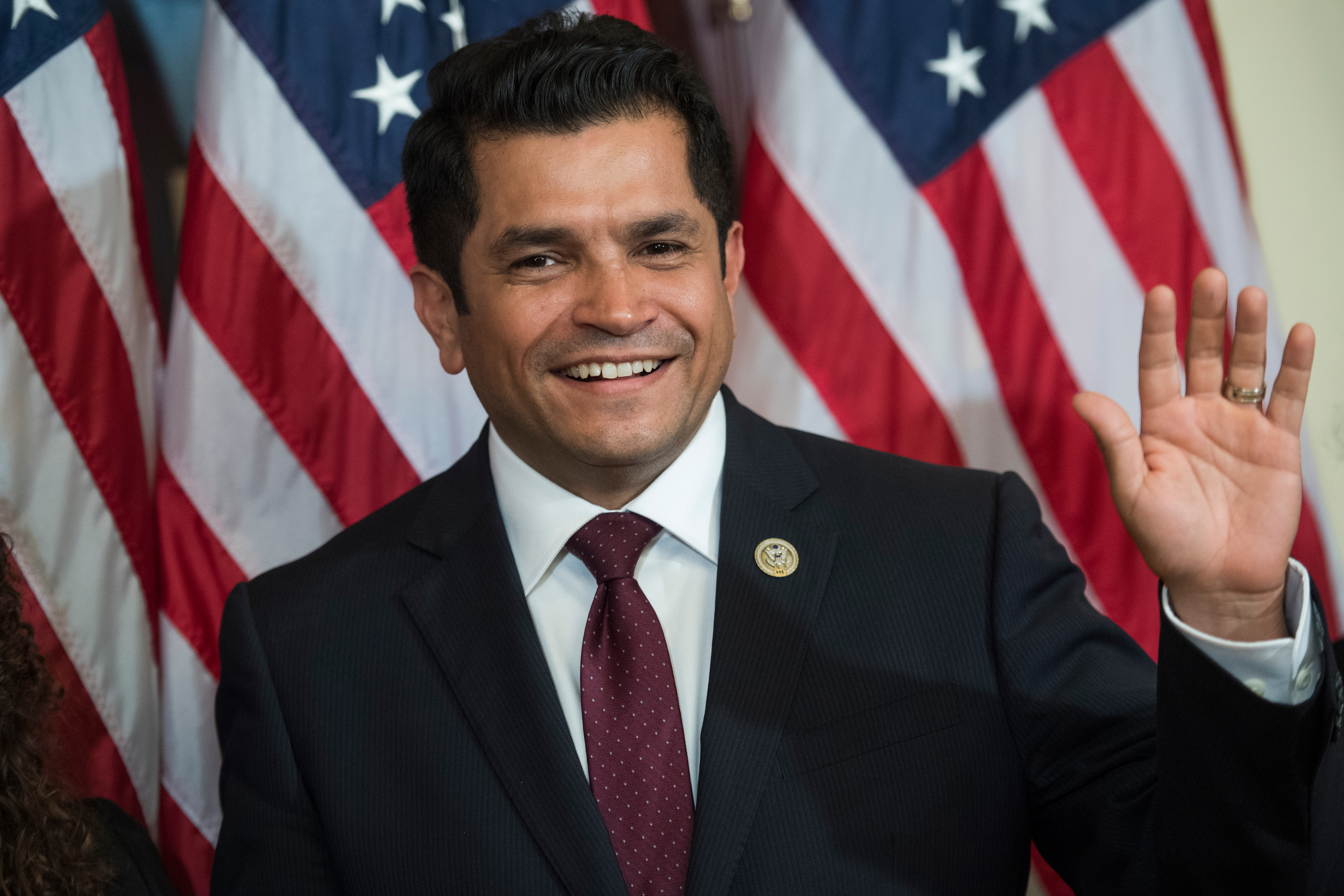Take Five: Jimmy Gomez
California Democrat reflects on his first week in Congress

Freshman Rep. Jimmy Gomez, 42, a California Democrat, talks about the time between his being elected and being sworn in, returning as a former Hill staffer, and his welcome to Washington compared to Montana Rep. Greg Gianforte’s.
Q: What has surprised you about Congress so far?
A: The House floor has been the most interesting for me because I come from a state legislature where everybody has a desk, there’s a specific hour that you vote. I feel like it’s part legislative body, part bizarre. … People are just trying to sell you on something on the floor — sign this, vote this way — and it’s kind of a little hustle and bustle with a little high school mixed in because everybody has their seating areas.
It’s different because you have one side of the aisle and you have the other. In California, we got away from that almost 15 years ago.
[Take Five: Trey Hollingsworth]
Q: What was your first day as a congressman like?
A: It was so much at one time. Most people have time to interview, get staff in order. I had to get staff in order and start voting almost immediately. It was nonstop, just the protocols and the culture that you have to learn.
Also, I just didn’t think how welcoming people were going to be. The members have been lending me interns and sending me food. The response of both sides of the aisle when I got sworn in was very positive.
I didn’t expect that because the gentleman from Montana that was sworn in made some comments and he got booed by his own colleagues, or somebody booed him. I think just how open and welcoming people have been. Very positive.
[Take Five: Brian Fitzpatrick]
Q: Have you been able to meet the massive California delegation?
A: I’ve known a lot of them because I worked in politics in California for a while in some form or fashion. Now I’m getting to know people that were, for lack of a better term, sort of legends in politics. Nancy Pelosi has been in office way before I graduated from high school. Now, all of a sudden, I’m serving in the same capacity they are. Not exactly the same, but we’re both members of Congress and that makes it a little bit special. Lucille Roybal-Allard has been elected for decades and this seat that I’m in is actually her dad’s. So, it kind of gives me a perspective that I’m here because other people came before me.
The Republicans, I never knew. Kevin McCarthy and I joke around that he gave me a lot of attention for a couple of weeks (over the delay in his swearing-in), but I’ve always heard that he’s a pretty good-natured guy. I met Ed Royce a couple weeks ago at a dinner. He seemed really nice.
Q: In the time between when you were elected and sworn in, how did you fill it?
A: I came the week after I got elected just to have some interviews with leadership and start looking for staff. When I walked in, that was kind of the first strange part. I worked here for [former Rep.] Hilda Solis. I remembered saying that I wasn’t going to come back to D.C. until I was a member of Congress. This time, coming back, it felt strange because I knew I had to do this job, but I was trying to transition from my Assembly job. It was just two worlds tugging at me.
The member pin — the first day I was here, I was just walking around. Nobody even noticed me. Then I put this on and all of a sudden, the eyes started trailing me. I tried to get away without wearing it, or at least leaving my jacket, and it’s too late, people know who I am now.
Q: You’re interested in media literacy being taught in high school. How did this come about?
A: A lot of the fake news conversation came right after the 2016 election, but it’s something that had been discussed before Donald Trump ever ran for president. There was a study from Stanford University that our young people couldn’t really tell what was real and what was fake. I thought the best way to come up with it was somehow teaching, oftentimes, young people to spot how you tell what is fake, what is real.
Quick Hits
Last book read: “I was reading a Harry Potter book in Spanish. I’m trying to work on my Spanish.”
Last movie seen: “Wonder Woman.”
Favorite song of all time: “I like musicals. In ‘La La Land,’ there’s this one, ‘Audition (The Fools Who Dream).’ I feel like the fools who dream and who take risks are the ones who change the world.”
Role model: “I don’t have one.”
Closest to in Congress: “Rep. Ruben Gallego, D-Ariz., is a friend of mine from before.”





